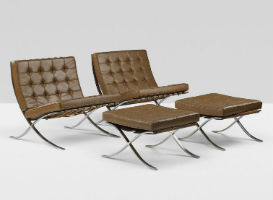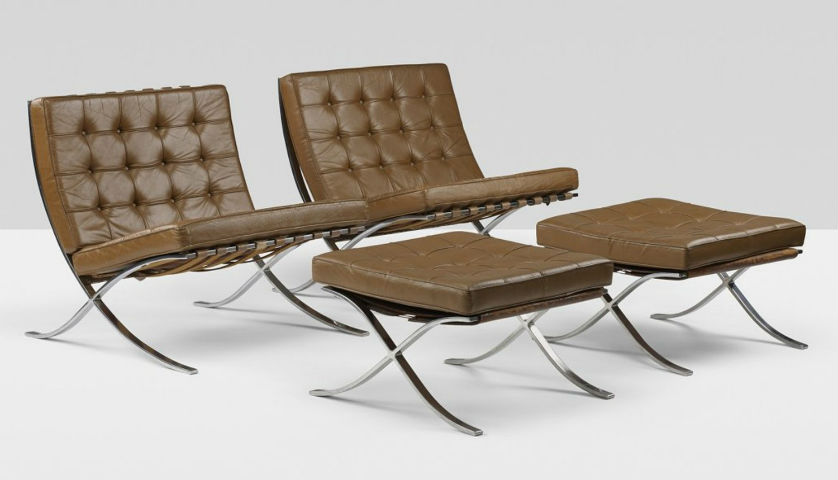
NEW YORK – Ludwig Mies van der Rohe (1886–1969) is easily recognized as a brilliant architect, whose “less is more” approach defined modernism. After achieving success in his native Germany, he immigrated to the United States in the late 1930s and achieved stunning heights of success here too.
He broke with old traditions of “box within a box” buildings and created a new mode of architecture with clean and modern lines. He favored modern materials such as industrial steel and plate glass to denote interior spaces. Framework was minimal in order to achieve an uncluttered and free-flowing open space. He described his style as “skin and bones” architecture.
His most famous architectural projects include the residential towers of 860–880 Lake Shore Drive in Chicago, the city where he set up shop and worked from during his three-decade career in America; the Chicago Federal Center complex, the Farnsworth House, and the Seagram Building in New York City.
A skilled architect of buildings, he was equally adept at designing furniture with similarly high standards. Including his Barcelona, Brno and the Tugendhat chairs, his pieces are recognized for superior craftsmanship and a blending of traditional and luxe materials like leather complemented with modern chrome frames. There is a clear division between the supporting structure and the supported surfaces, and while the chairs are sturdy, their design affords them a light and delicate appearance.
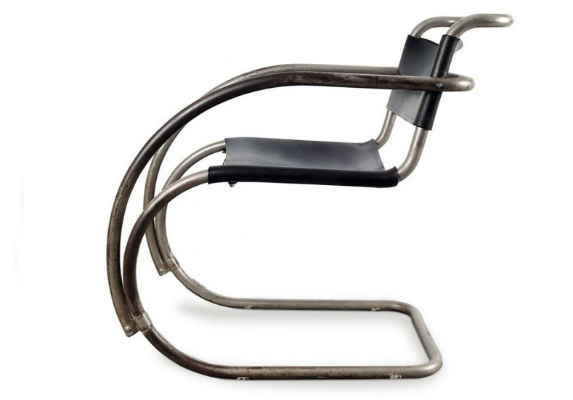
Among his furniture, nothing screams Mies more than his Barcelona lounge chair. While still in Germany, he was chosen to design the German Pavilion at the Barcelona Industrial Exposition of 1929. He created a rhythmic design of glass, stone and metal where space flowed openly. “With no discernible distinction between rooms or inside and outside, the design fundamentally challenged the architectural ‘boxes within a box’ standard of the time. Inside, Mies included the Barcelona Chair and Ottoman, designed to offer the King and Queen of Spain a place to rest (they in fact never sat down). The Barcelona Pavilion and the chairs it contained are universally recognized as milestones of modern design,” according to designer collective Knoll in an online bio of the designer.
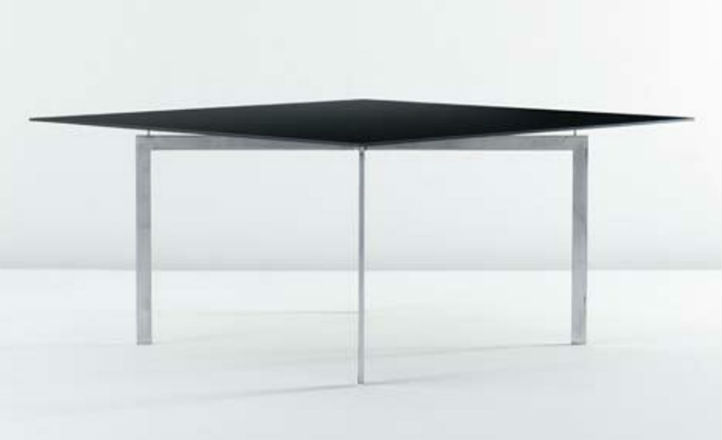
The Museum of Modern Art in New York City profiles the Barcelona chair on its website. “The Barcelona Chair achieves the serenity of line and the refinement of proportions and materials characteristic of Mies van der Rohe’s highly disciplined architecture. It is supported on each side by two chrome-plated, flat steel bars. Seen from the side, the single curve of the bar forming the chair’s back and front legs crosses the S-curve of the bar forming the seat and back legs, making an intersection of the two. This simple shape derives from a long history of precedents, from ancient Egyptian folding stools to 19th-century neoclassical seating. The cantilevered seat and the back of the original chairs were upholstered in white kid leather with welt and button details.”
“If I could choose one design by Mies to own and live with, it would be an early example of the Barcelona lounge from 1929. Probably the most famous design of the 20th century, this chair is truly a throne of modernism,” said Richard Wright, director of Wright Auction in Chicago, which has sold many choice pieces of Mies van der Rohe furniture.
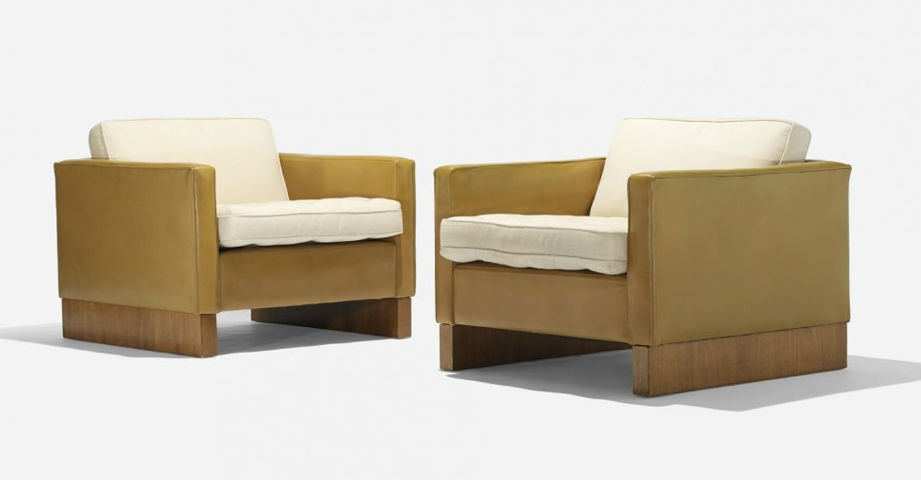
“Early examples of iconic designs or those from custom interiors are the most desirable works by Ludwig Mies van der Rohe. Many of his designs are still in production and many were widely copied, so collectors should look for works with special provenance,” Wright added. “Further, quality of construction and material can be a telling. Mies’ designs were made to the highest standards—industrial materials are finely finished and paired with hardwoods and leather providing a tactile sense of luxury. Copies lack this and take the soul out of the work.”
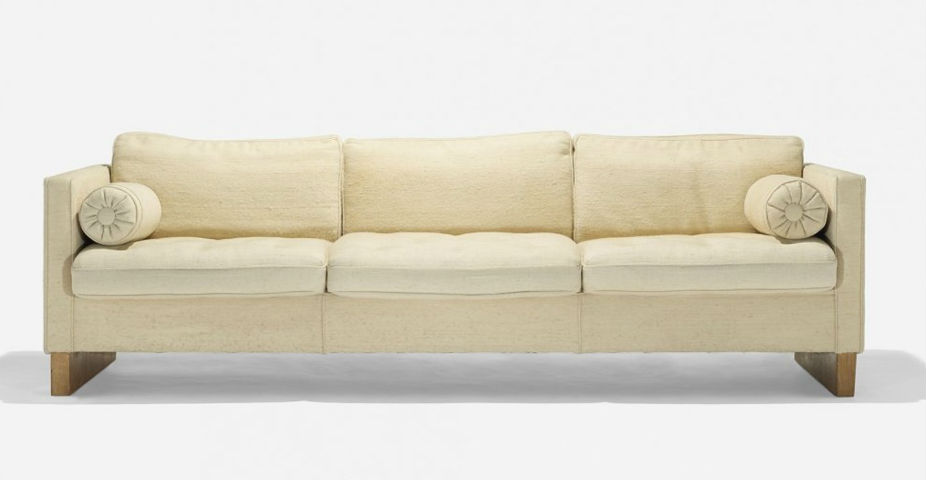
Auctiongoers and New York City’s glitterati will not soon forget the July 2016 auction of the contents of the Four Seasons restaurant, which topped $4 million and ranged from modernist lounge chairs and tables, where celebrities and businessmen held court, to the ashtrays and even the restaurant’s sign. The restaurant was housed for decades in the city’s Seagram Building, a bastion of modernism designed by Mies and Philip Johnson that was finished in 1958. The restaurant itself, before closing last year, drew a rich and elite crowd, giving birth to the term, the “power lunch.” The Four Seasons was furnished with modern furniture and accessories, most of which were designed by Mies and Johnson, an unheard of accomplishment then and now.
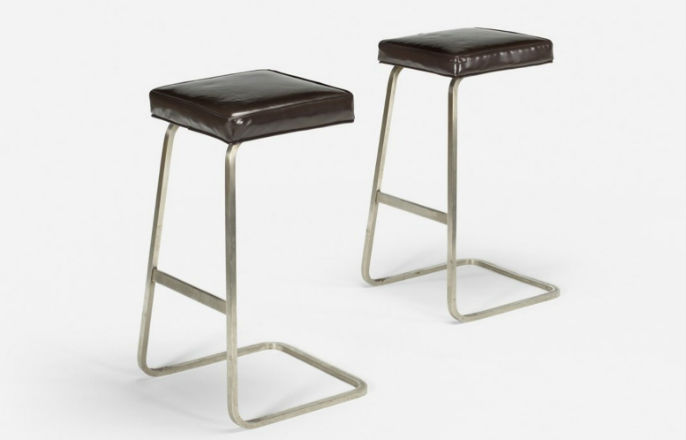
Discussing furniture designed by architects in an interview with Time magazine in February 1957, Mies modestly said, “A chair is a very difficult object. A skyscraper is almost easier. That is why Chippendale is famous.”
Thanks to Ludwig Mies van der Rohe’s keen sense of proportion and daring designs, this gifted architect is equally famous for both his buildings and furniture.


